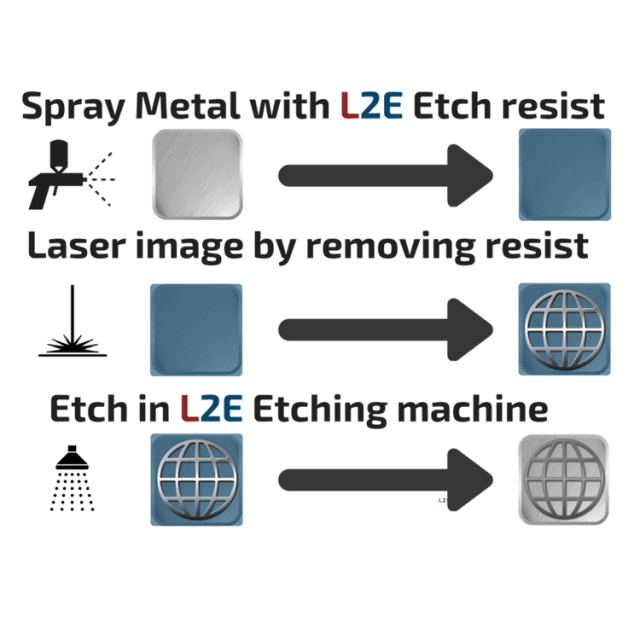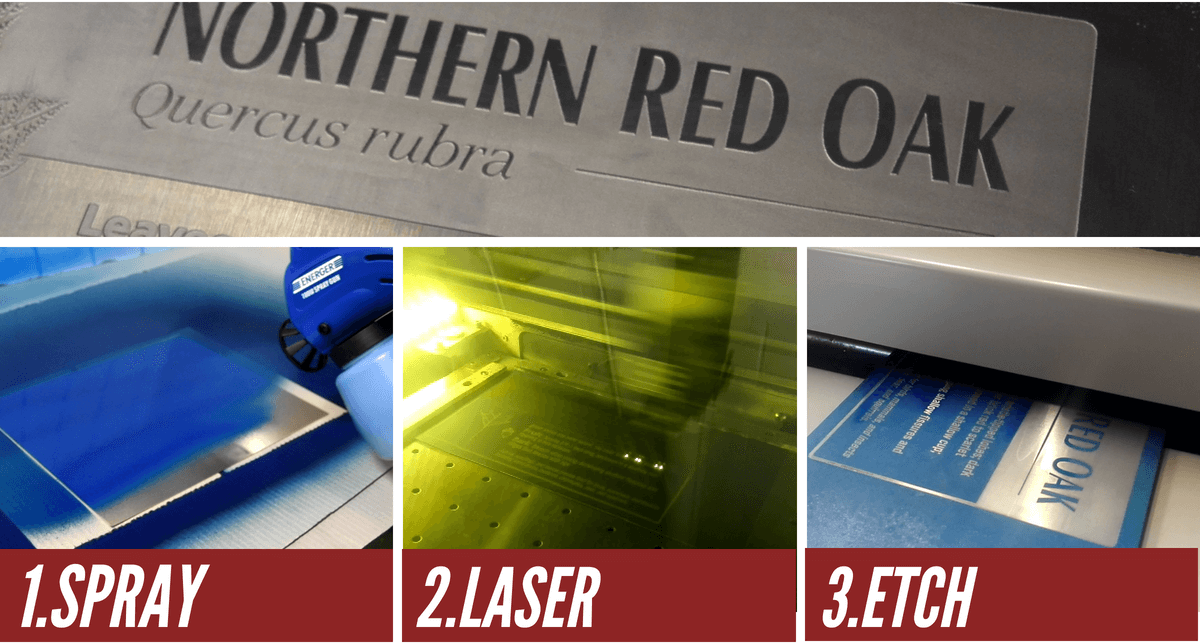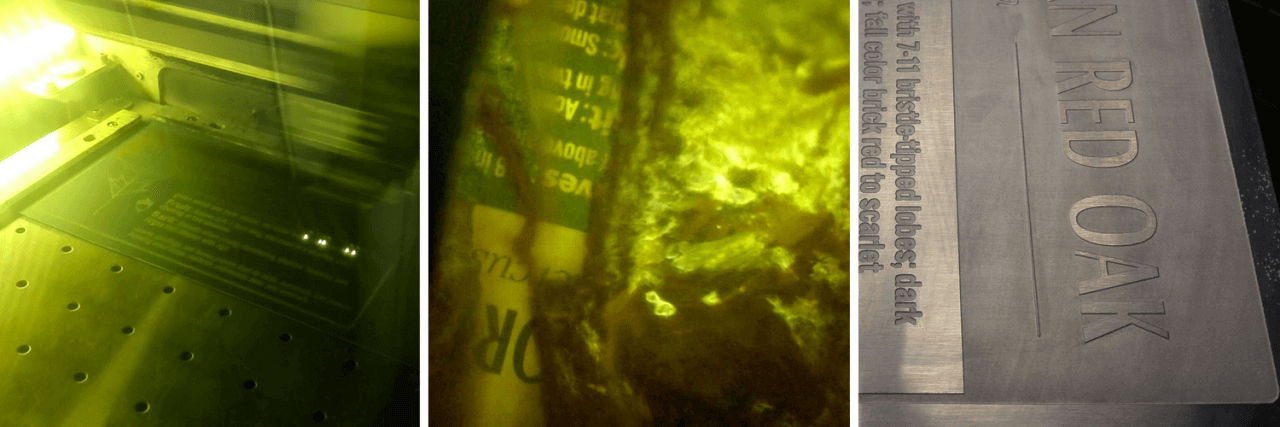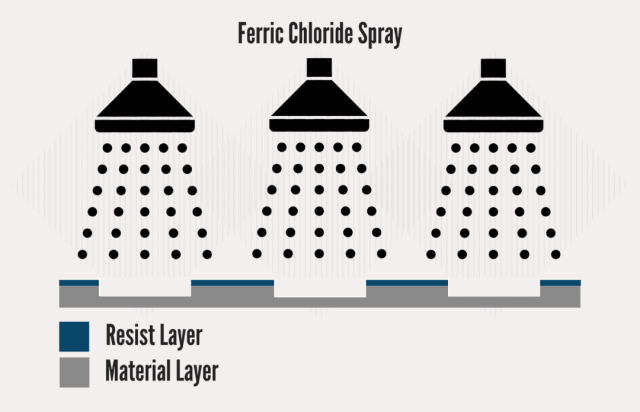ETCH PROCESS
A NEW APPROACH FOR DEEP ENGRAVING METAL. COMBINE YOUR CO2 LASER WITH THE POWER OF CHEMICAL ETCHING
Laser2Etch uses a laser engravable etch resist to greatly reduce the amount of space, time and equipment required by traditional photo-chemical etching methods. By using your existing Co2 or fiber laser to create the image you can easily add deep metal etching capabilities to your laser engraving business.
The L2E Chemical etching machine is an affordable conveyorised spray etching machine. Paired with our unique 3 step process it makes chemical etching more accessible than ever.


Spray coat the material with L2E Etch resist. This will act as a barrier to protect the material in the etching machine. L2E Etch resist is a thermally cured ink designed especially for Laser Engraving
When the resist has dried use your laser to create the desired image. This is achieved by removing the resist from the areas you want to etch and exposing the bare metal.
Place the material in the
L2E
chemical etching machine. The ferric chloride spray will etch away the unprotected areas to create your image. Adjust conveyor speed to etch to desired depth.

CHEMICAL ETCHING FAQ's
What is chemical etching?
Chemical Etching is a subtractive manufacturing process that uses a high pressure temperature-regulated chemical spray to remove material to create a permanent etched image or shape in metal.
What are the advantages of chemical etching metal over laser engraving metal?
The main advantage with chemical etching is that it etches the whole surface area at the same time. A laser has to mark each area individually often making many passes to achieve tangible depth. With chemical etching the amount of detail and size of the etch area has little effect the process time. This means that you are able to deep etch even large & complex designs in minutes.
What Chemical is used in the etching process?
LASER2ETCH uses a chemical called Ferric Chloride (40% strength) Ferric Chloride is inexpensive, widely available and by far the least hazardous chemical used in metal etching. It does not produce dangerous fumes, It is odourless, it is not absorbed through the skin and does not cause burns. The machine holds 20 gallons of Ferric Chloride.
How often do I need to change the ferric chloride solution in my etching machine?
Typically you will need to change the etching solution completely every 6-12 months. The solution will also need to be topped up with fresh chemical occasionally to compensate for evaporation and drag out.
How do I dispose of used chemical?
Your local chemical supplier is usually able to collect and dispose of your used chemicals. The L2E is designed to make it easy to return the chemical to its original container. The L2E has triple squeegee rollers before the rinse section to eliminate chemical carryover so rinse water is safe to go direct to drain.
What is L2E Etch resist?
L2E etch resist is a thermally cured laserable ink etch resist. It can be applied via a spray gun or screen printed directly onto the metal.
How do i strip the resist?
L2E Etch resist is easily removed in a simple caustic soda solution, no harmful solvents are required
What metals can I etch with ferric chloride?
Ferric ChlorIde is ideally suited for etching stainless steel, nickel, copper, bronze, brass, aluminium and more.
What metals can't I etch with laser2etch?
Due to the chemistry required to etch exotic metals such as gold, silver and titanium specialist equipment is needed. Magnesiuim and Zinc also require specialist equipment. Our parent company is able to supply this equipment. visit WWW.MASTERETCHING.COM
Contact Us
Have any questions on the Laser2etch process? Need a quote? Would you like a copy of our brochure?
Contact us today to find out how you could add more depth to your laser engraving business!
If you would like copy
Thanks, we look forward to contacting you!
Oops, there was an error sending your message.
Please try again later.
Please try again later.
LASER2ETCH
Unit 10 Pywell Court
Corby, Northants
UK, NN15 5WA

